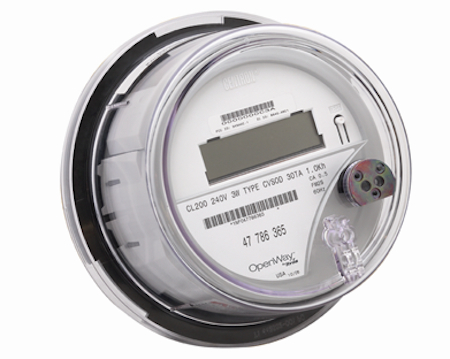[Editor’s Note: This latest column from the Environmental Defense Fund is a cross post from the organization’s Energy Exchange blog. It is penned by Jamie Fine of EDF’s Energy Program.]
The digital “smart meter” replacement of antiquated analog meters in California has caused quite a stir. These devices have been making headlines since installations began en masse in 2006 because of concerns about health risks related to the wireless technology they use to transmit data and coincidental bill increases. While anindependent contractor hired by the California Public Utilities Commission found that the initial bill increases were due to summertime rate hikes and unusually high summer temperatures, PG&E’s smart meters are in the news again for billing errors.

This time there are faulty meters generating billing errors when hot weather makes them run faster than normal. While some skeptics may feel that the meter malfunctions validate their concerns, in fact, it demonstrates a key smart meter benefit: for the first time ever, meters have the ability to alert utilities that they aren’t working properly.
When Bad News is Good News
In this particular instance, PG&E remotely compared the meters’ clocks with real time. It identified roughly 1,600 out of 2 million meters made by Landis & Gyr that were malfunctioning. Its other 2 million meters made by General Electric don’t appear to have the problem.
This is transformative: PG&E can now monitor millions of meters in real time to comprehensively identify and ameliorate problems.
This isn’t possible with old analog meters, which is one of the many reasons why they’re being replaced. Before smart meters, electricity users who suspected erroneous billing had little evidence to make their claims. Now the utility can proactively identify and address problems.
To Put Things in Perspective
While it is inconvenient when any technical device, including a smart meter, is malfunctioning, the rate of problems with analog meters is much higher. Consider this comparison:
- Roughly 1,600 out of 2 million meters were found to have internal clocks that run a bit fast in rare hot conditions. That’s a meter failure rate of 0.08%, or less than one 10th of a percent. This failure rate is believed to be within industry norms.
- According to PG&E, analog meters have a failure rate in the range of 3%, which means they fail at rates about 40 times greater than suggested by these faulty smart meters.
PG&E estimates that the overcharge for failed smart meters is less than $40/year, about $3.33 per month. Again, it is the intelligent meters that enabled PG&E to quantify and correct the problem. All of the customers with faulty meters will be repaid in full and receive replacement meters. They will also get $25 for being inconvenienced and receive a free home energy audit.
Advantages of Smart Meters
Once smart meters have been fully deployed, utilities will be able to remotely and in real-time monitor all meters in their service territory, isolating malfunctions with precision and speed. What does that mean for consumers? More reliable service and quick resolution when problems arise.
You might wonder why EDF, an environmental advocacy group, is commenting on this. Smart meters are key to delivering the environmental and public health benefits of the smart grid.
EDF will soon be releasing a smart grid evaluation framework targeted at the plans that PG&E, San Diego Gas & Electric, and Southern California Edison owe the state by July 1, 2011.
We will then be publicly evaluating those plans for their ability to deliver benefits including: increased effectiveness and reduced costs of energy efficiency and other electricity conservation programs; integration of electric vehicles and intermittent renewable electricity generation resources, such as rooftop solar panels.
Stay tuned.